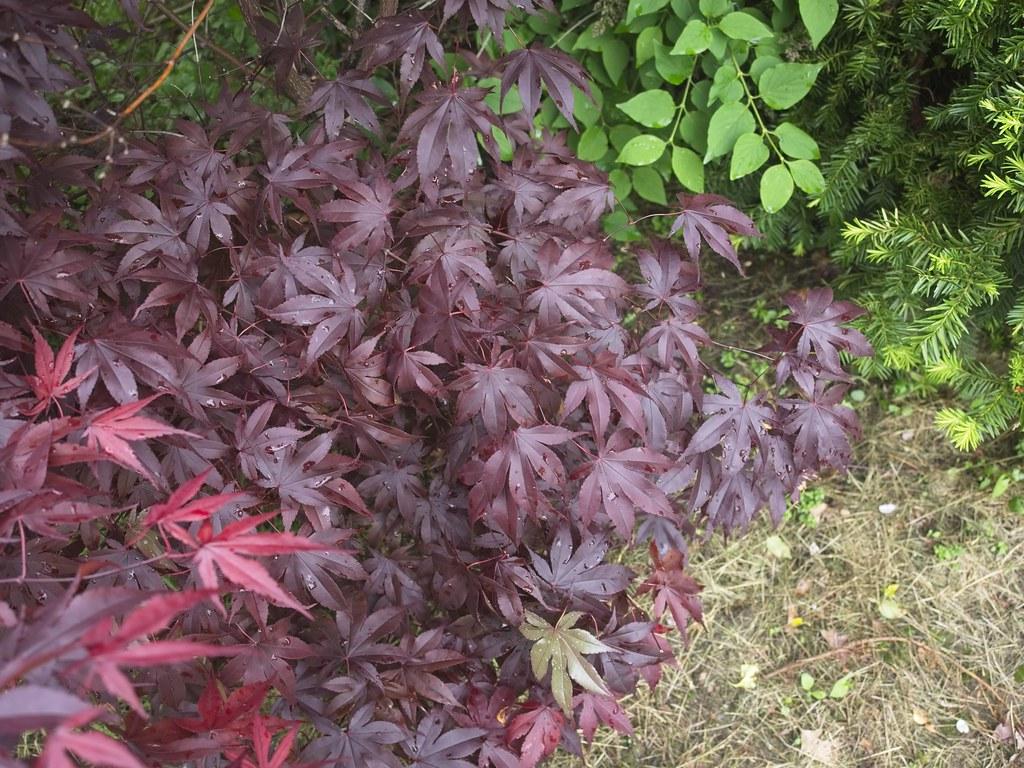

Bloodgood Japanese Maple (Acer palmatum ‘Bloodgood’)
Also known as: Acer palmatum 'Bloodgood'.
The Bloodgood Japanese Maple (Acer palmatum ‘Bloodgood’) is an amazing plant species for its beauty and features. It is considered a medium-sized tree, with an attractive upright form that gives it a beautiful presence in any landscape. The leaves are a deep maroon color in the summer, changing to a brilliant scarlet in the fall. Its bark is smooth and gray, adding to its aesthetic. The Bloodgood Japanese Maple is very beautiful, disease resistant, and easy to care for, making it the perfect choice for your garden.
Plant care guide:
Watering
For the Bloodgood Japanese Maple, it is important to water consistently, allowing the soil to only dry slightly before watering. In general, it should be watered once or twice a week in the summer months, about ½ to 1 inch of water each time, depending on the soil and the weather. In the winter months, it should be watered about every 10 days, about ½ inch of water each time. It is also important to mulch around the tree’s base to help keep moisture in the soil.
Sunlight
The Bloodgood Japanese Maple requires bright but indirect sunlight for optimal growth. When the maple is young, it should be provided with 4-6 hours of direct sunlight daily throughout the spring and summer. As the maple matures, it will become more tolerant of direct sunlight, and the amount of sunlight can be increased to 6-8 hours per day. However, it is important to keep the tree sheltered from the harsh afternoon sun, as this can cause leaf scorching and other symptoms of stress. Deep shade should also be avoided, as this will cause the maple to produce less vigorous growth.
Pruning
For Bloodgood Japanese Maple, pruning should be done in late winter or early spring, when the plant is still dormant. Pruning should be done carefully and selectively and should only remove dead, diseased or broken branches, or branches that are crossing or growing too close to the center of the plant. Generally, only up to 1/3 of the branches should be removed in any given year. Pruning for shape should also be done in winter or early spring, removing longer shoots to maintain the desired form.
Plant information:
- Family: Sapindaceae
- Type: Tree
- Height: ~6.1 meters
- Cycle: Perennial
- Growth Rate: High
-
Anatomy:
- Leaves: purple, red-maroon, red-orange
- Stems: purple, red, brown
- Center: purple
- Veins: red-purple
- Flower Color: Red
- Maintenance: Low
- Care Level: Moderate
-
Watering:
- ~3 cm
- Average
- Every 7-10 days
- Sunlight requirement: full sun, part sun/part shade
- Pruning:
- February, March, April, December, January, February, March, April
- Propagation: Grafting Propagation, Cutting, Layering Propagation, Air Layering Propagation, Root Division
- Flowering Season: Spring
- Origin: Japan
- Seeds: No
- Drought Tolerant: No
- Salt Tolerant: No
- Thorny: No
- Invasive: No
- Tropical: No
- Indoor: No
- Flowers: Yes
- Cones: No
- Fruits: No
- Edible Fruit: No
- Leaf: Yes
- Edible Leaf: No
- Cuisine: No
- Medicinal: No
- Poisonous to Humans: No
- Poisonous to Pets: No

Content is based on public databases such as the KEW Plants of the World database, among others. Please double-check all information. "About Plants" does not take responsibility for any inaccuracies.
